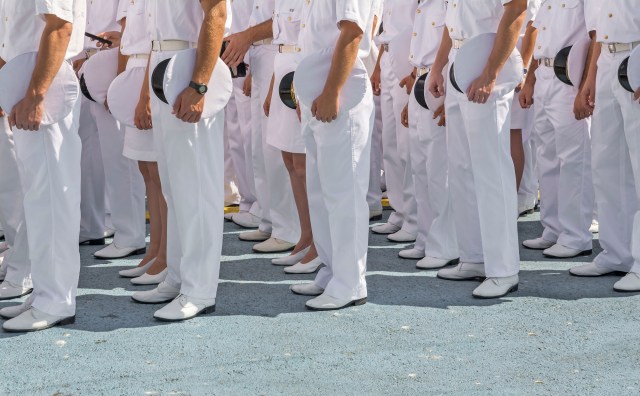Decoding the Navy Rank Chart: What Each Insignia Represents

The United States Navy boasts a well-defined hierarchical structure, making it crucial to grasp the navy rank chart to fully understand the chain of command and the distinct roles that each sailor fulfills. Ranging from seamen to admirals, each rank is adorned with unique insignia that signifies their level of authority and specific responsibilities. In this article, we will unravel the intricacies of the navy rank chart and delve into what each insignia truly represents.
Enlisted Ranks
In the navy, enlisted personnel make up the majority of the workforce and perform various duties on ships, submarines, and aircraft. The enlisted ranks start from E-1 (Seaman Recruit) and progress up to E-9 (Master Chief Petty Officer). Each rank has a distinct insignia that distinguishes it from others.
At the beginning of their career, sailors start as Seaman Recruits (E-1) with no insignia. As they gain experience and move up in rank, they earn more responsibility. For example, after completing basic training, individuals become Seamen Apprentices (E-2) and wear a single chevron to signify their new rank.
Moving further up the enlisted ranks, Petty Officers Third Class (E-4) wear two chevrons with a specialty mark indicating their area of expertise. Petty Officers Second Class (E-5) have three chevrons with an eagle above them denoting their increased leadership role.
Reaching Petty Officer First Class (E-6), sailors wear three chevrons with a star above them symbolizing their position as senior petty officers. Master-at-Arms First Class (MA1), for instance, is responsible for maintaining discipline on board naval vessels.
Chief Petty Officers
Chief Petty Officers are highly experienced personnel who serve as technical experts in their respective fields while also assuming leadership roles within their units. These ranks start at E-7 (Chief Petty Officer) and go up to E-9 (Master Chief Petty Officer).
Chief Petty Officers wear three chevrons with an arc above them. The arc represents the “rocker” and signifies their authority over enlisted personnel. Each additional rocker indicates a higher rank, with Master Chief Petty Officers wearing three rockers.
Warrant Officers
Warrant Officers are technical specialists who possess expertise in specific areas such as aviation, engineering, or medicine. They are considered subject matter experts and provide valuable guidance to commanding officers.
Warrant Officers wear silver bars that signify their rank. They start at W-1 and progress up to W-5. As they advance in rank, the number of silver bars increases, representing their expanded responsibilities and expertise.
Commissioned Officers
Commissioned officers hold leadership positions within the navy and are responsible for making strategic decisions. They start at O-1 (Ensign) and can progress up to the highest ranks of O-10 (Admiral). Commissioned officers wear shoulder boards displaying various symbols denoting their rank.
For example, Ensigns (O-1) wear a single gold bar on each shoulder board, while Admirals (O-7 to O-10) display different numbers of stars depending on their rank. Four stars represent a Fleet Admiral or Admiral of the Navy, the highest-ranking officer in the navy.
Understanding the navy rank chart is crucial for both sailors and civilians who wish to comprehend the structure and organization within the United States Navy. Each insignia represents not only an individual’s level of authority but also their experience, expertise, and responsibilities. By decoding these insignias, we gain a deeper understanding of how this prestigious military branch operates.
This text was generated using a large language model, and select text has been reviewed and moderated for purposes such as readability.





